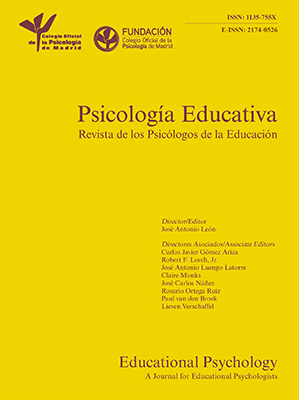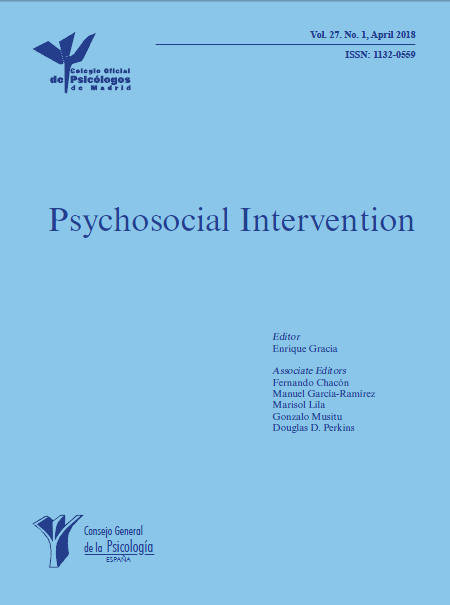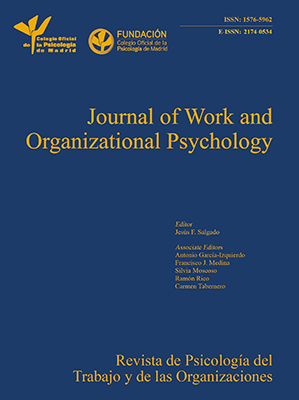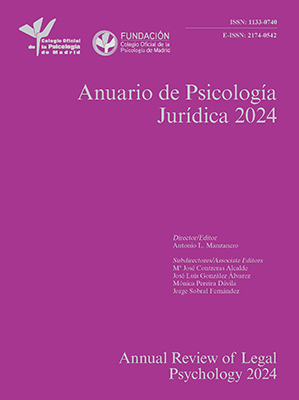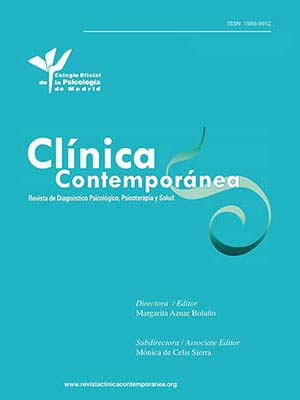
Effects of Food Advertising on Youth’s Eating Behavior: A Systematic Review of Longitudinal Studies
[Los efectos de la publicidad alimentaria en el comportamiento alimenticio de los jóvenes: una revisión sistemática de los estudios longitudinales]
Ángela-Justine González Geuder1, Natalia Martín-María1 and 2
1Universidad Autónoma de Madrid, Spain; 2Centro de Investigación Biomédica en Red de Salud Mental - CIBERSAM, Instituto de Salud Carlos III, Spain
https://doi.org/10.5093/clh2025a15
Received 9 August 2024, Accepted 7 April 2025
Abstract
Background:Previous cross-sectional studies have found a positive relationship between commercial audiovisual media viewing and youth overweight/obesity, suggesting that advertising of low-nutritional-value products (LNVP) influences unhealthy food consumption patterns. The objective of this study was to analyze the long-term influence of LNVP advertising on children’s and adolescents’ consumption habits.Method:A systematic literature review following PRISMA guidelines examined the long-term effects of LNVP advertising on youth’s diet-related outcomes. A search in PubMed and PsycINFO (June 2024) included studies from the last 12 years exploring the relationship between digital food advertising and subsequent consumption behaviors. Two authors independently screened and assessed studies using an adapted Newcastle-Ottawa Scale. Results: Findings were inconclusive, with six of twelve studies reporting a positive relationship, while the other six found no association. Conclusions: LNVP advertising does not enhance youth’s food choices or nutritional knowledge. Its impact on diet appears limited and may depend on other factors, such as parental nutritional knowledge.
Resumen
Antecedentes:Estudios transversales previos han encontrado una relación positiva entre la exposición de los jóvenes a medios audiovisuales publicitarios y el sobrepeso/obesidad, lo que indica que la publicidad de productos de bajo valor nutricional (PBVN) influye en patrones de consumo alimenticio poco saludables. El objetivo de este estudio fue analizar la influencia a largo plazo de la publicidad de PBVN en los hábitos de consumo infantil y juvenil. Método: Se realizó una revisión sistemática de la literatura científica siguiendo las directrices PRISMA para examinar los efectos a largo plazo de la publicidad de PBVN en los resultados dietéticos en población infantil y juvenil. Se llevó a cabo una búsqueda en las bases de datos PubMed y PsycINFO (junio de 2024), incluyendo estudios de los últimos 12 años que explorasen la relación entre la publicidad alimentaria digital y las conductas de consumo posteriores. Dos autores evaluaron de forma independiente los estudios seleccionados mediante una adaptación de la escala Newcastle-Ottawa. Resultados: Los hallazgos no fueron concluyentes ya que seis de los doce estudios revisados encontraron una relación positiva, mientras que en los otros seis no hallaron ninguna asociación significativa. Conclusiones: La publicidad de PBVN no mejora la elección alimentaria ni el conocimiento de los jóvenes sobre nutrición. Su efecto en la dieta parece ser limitado y podría estar condicionado por otros factores, como el nivel de conocimiento de la familia sobre nutrición.
Palabras clave
Marketing, Productos de bajo valor nutricional, Hábitos dietéticos, ObesidadKeywords
Marketing, Low-nutritional-value products, Dietary habits, ObesityCite this article as: González Geuder, Á. and Martín-María, N. (2025). Effects of Food Advertising on Youth’s Eating Behavior: A Systematic Review of Longitudinal Studies. Clinical and Health, 36(2), 97 - 108. https://doi.org/10.5093/clh2025a15
Correspondence: natalia.martinm@uam.es (N. Martín-María).Preferences or aversions towards certain foods develop at a very early age. Childhood and adolescence are critical stages in the development of consumption patterns, which tend to remain throughout life (Sánchez-García et al., 2014). Since nutrition is a critical factor for health, it is crucial for children to adopt healthy eating habits from an early age to prevent long-term problems associated with obesity or overweight (Calderón et al., 2009). Generally, children show an innate preference for highly palatable foods, which may have an evolutionary explanation since in times of food scarcity consuming high-calorie foods was likely crucial for growth and survival (Ariza et al., 2018). However, besides genetics, other learning-related factors also influence daily food choices (Isasmendi et al., 2018). Among the most studied factors are parental roles (parental mediation) and exposure to audiovisual media (food advertising). (See Figure 1, displaying the General Influence Model). Studying the impact of these factors on children’s and adolescents’ consumption patterns is crucial, as preference and habituation to such products can lead to increased long-term consumption, contributing to childhood overweight and obesity (Sánchez-Pimienta et al., 2016). Specifically, food advertising has been considered one of the main causes of unhealthy food consumption behaviors among minors (Okunogbe et al., 2022). This paper aims to study the long-term effects of food marketing on consumption habits or patterns in minors. Several studies have shown that food advertising significantly influences our preferences and consumption behaviors, increasing the likelihood of purchasing advertised products and fostering long-term brand loyalty (Campos et al., 2020). It is therefore unsurprising that marketing investment plays a central role in the food and beverage sector. In 2012 alone, companies in Spain invested a total of 2,558.4 million euros in advertising (Asociación de Marketing de España, 2013), through various media (television, social networks, influencers). Actually, between 2012 and 2016, only 8% of television advertising featured products of high nutritional value (Montaña et al., 2019). Neuromarketing studies demonstrate that, generally, when we see advertisements for low-nutritional-quality foods (cereals, snacks, high-calorie foods, soft drinks, etc.), brain nuclei related to emotions and pleasure-reward circuits (Nucleus Accumbens, Ventral Tegmental Area, Striatum, and Prefrontal Cortex) are triggered (Carnell et al., 2014; Val-Laillet et al., 2015). These ads use visual and auditory effects that exhibit pleasure, positivity, happiness, and other hedonistic elements associated with the consumption of the advertised product. Additionally, advertisements often falsely associate the product with health benefits using descriptions like “low in fat” or “rich in omega 3,” leading consumers to misinterpret their nutritional value (Binder et al., 2020). Citing Bandura’s (2002) Observational Learning Theory, exposure to such ads could cause consumers to unconsciously associate the consumption of the advertised product with the happiness states shown in the ads, in addition to developing a mistaken understanding of the products’ nutritional value. This is especially evident in food advertising aimed at children and adolescents, which often uses mascots, cartoons, or well-known public figures with whom minors empathize. This practice aims to induce positive emotional responses linked to the product and increase its demand (Montaña et al., 2019). Minors, in this case, are not only the direct audience of most brands (unhealthy food advertising appears five times more often in children’s programs than in adults’; Harrison & Liechty, 2012), but also much more susceptible to its effects, as they often lack the cognitive skills to understand the underlying persuasive intent and commercial biases (Tarabashkina et al., 2016). Traditionally, advertising exposure has been mainly associated with television. However, today’s minors also consume other digital entertainment media with commercial content, such as social networks (YouTube, Instagram, X) or streaming platforms (Amazon Prime, Netflix, HBO). Through these sources, minors are increasingly exposed to advertising, including for low-nutritional-value products (Ortega-Mohedano & Pinto-Hernández, 2021). Cross-sectional studies indicate that unhealthy food advertising in the media can influence children’s and adolescents’ food preferences, attitudes, and consumption behaviors (Andreyeva et al., 2011). Specifically, among all the advertisements minors are exposed to, advertisements for foods classified as unhealthy due to their high sugar, fat, or salt content prevail (González, 2013; Royo-Bordonada et al., 2016). Thus, there is higher media exposure to unhealthy food compared to healthy food (Jimenez-Morales et al., 2019). From the socio-cognitive theory perspective (Gilmore & Jordan, 2012), it is argued that children who are more exposed to this type of advertising more frequently consume these unhealthy foods, consequently increasing their long-term likelihood of suffering from overweight or obesity (Robinson, 2001). However, while some longitudinal studies demonstrate that exposure to food marketing through television predicts increased long-term consumption of these products (Barr-Anderson et al., 2009), the US Institute of Medicine (McGinnis et al., 2006), now known as the National Academy of Medicine (NAM), concluded that, in light of results from other studies of the same kind, other factors (such as the environment or a child’s idiosyncratic characteristics) could mediate this association. Therefore, there was insufficient evidence to determine a causal relationship between the two variables. Nonetheless, their report concluded that “food and beverage advertising influences children’s purchase preferences and demands, as well as their consumption at least in the short term, and it is likely that it also contributes to the worsening of diets and health risks” (McGinnis et al., 2006). This evidence prompted the implementation of government measures in various countries to reduce or control children’s exposure to low-nutritional-quality food advertising (Andreyeva et al., 2011). For example, in 2005 the Spanish Agency for Consumer Affairs, Food Safety and Nutrition (AECOSAN), through advertising code regulation, implemented control measures regarding product presentation, language used, supposed benefits of consumption, and the use of popular characters, aiming to reduce the impact of food advertising on children under 12 years of age (Montaña et al., 2019). As previously mentioned, in recent years exposure to advertising through audiovisual media has significantly increased, especially among the child population (Ortega-Mohedano & Pinto-Hernández, 2021). Concurrently, according to data published by the WHO from Okunogbe et al., (2022), the prevalence of childhood overweight and obesity has drastically increased among children and adolescents (ages 5 to 19) from 8% in 1990 to 20% in 2022, making it a severe global health issue. According to the same organization, the obesogenic environment, which includes continuous exposure to unhealthy food advertising in the media, becomes a risk factor for this problem. Despite these data, longitudinal studies examining the way the advertising of low-nutritional-value products affects long-term eating behavior in children and adolescents are scarce. This is likely due to the complexity not only of conducting such studies but also of interpreting their results, as there are a lot of factors involved. Therefore, this study conducted a systematic review of recent longitudinal studies carried out between 2012 and 2024, with the overarching aim of understanding how exposure to audiovisual media (advertising) influences minors’ consumption patterns in the long term. This is highly relevant for the design and implementation of effective interventions aimed at preventing overweight and obesity in children and adolescents, thereby reducing the long-term risk of associated physical health problems (cardiovascular diseases, diabetes, obesity, etc.) and psychological issues (depression, anxiety, eating disorders, etc.). This is a systematic literature review of peer-reviewed scientific articles on the long-term influence of low nutritional-value products advertising on diet related outcomes in children. This review is written according to the most recent PRISMA guidelines for systematic reviews (Page et al., 2021). The review protocol was registered in the PROSPERO International Prospective Register of Systematic Reviews during the searches (registration number: CRD42024571895). Search Strategy and Study Selection A systematic review of relevant literature was conducted on June 29 and 30 2024, using the PubMed and PsycINFO databases. For both databases, the search was filtered by abstract and title using the following combination of keywords: (“food advertising” OR “food marketing”) AND (“food intake” OR “food behavior” OR “dietary habits” OR “dietary patterns” OR “dietary intake” OR “nutritional habits”). To limit the results, filters for age (“childhood” and “adolescence”), publication year (2012-2024), and language (Spanish or English) were applied. Additionally, for PubMed the keyword search included the Boolean descriptor (AND “longitudinal study”); this was not applied to PsycINFO as this database allows filtering search results by study type, in this case longitudinal. The studies found in this search were imported into the bibliographic manager RefWorks to facilitate citation and reference management. Duplicate results were subsequently removed. The full-text review, data extraction, and quality assessment were conducted independently by both authors (AGG and NMM). During the screening process, any conflicts between the authors were resolved through discussion. In cases where consensus could not be reached initially, the authors carefully reviewed the inclusion and exclusion criteria and re-evaluated the study in question to ensure alignment with the research objectives. Inclusion and Exclusion Criteria Inclusion criteria for the studies shown during the search were as follows: 1) articles addressing the association between digital advertising of low-nutritional-value foods (including direct exposure to media marketing or screen time) and subsequent consumption behaviors (measured through body mass index – BMI, frequency of consumption, or nutritional knowledge); 2) articles where the dependent variable was measured at least at two different time points; and 3) articles with participants under 18 years of age. Exclusion criteria applied were: 1) articles with other dependent or independent variables that could not be analyzed in isolation from the variable of interest (e.g., behaviors following the implementation of Chile’s food labeling and advertising regulation law); 2) meta-analyses, systematic reviews; 3) articles analyzing non-digital marketing effects (e.g., in-store advertising); 4) articles in languages other than Spanish or English; and 5) articles with fewer than 100 participants. Figure 2 Flow Diagram of Article Selection for the Review.  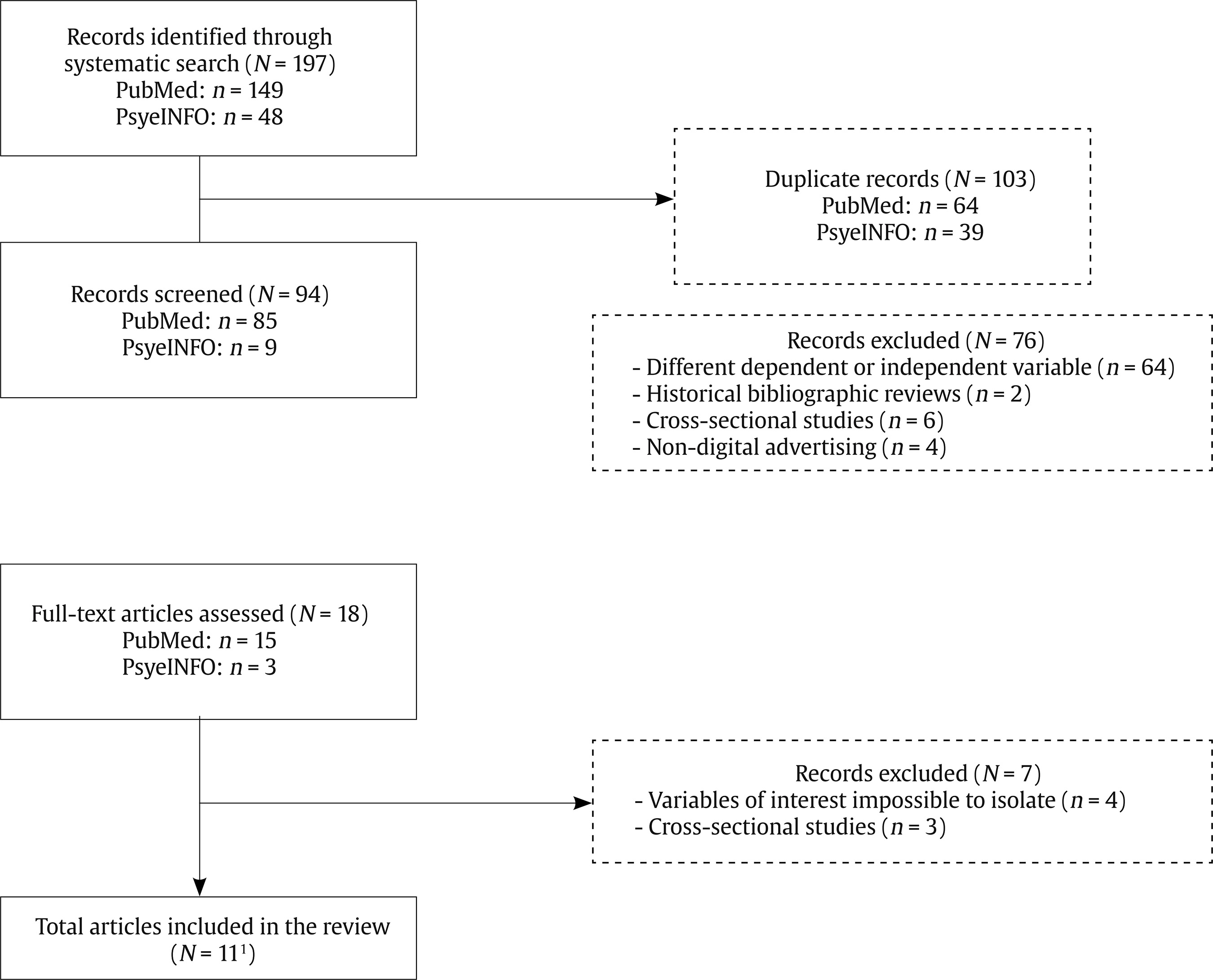 1The total number of articles included in this review was 11, but one of them was subdivided (Smit et al. 2020), as different effects on diet were found depending on whether the subsequent consumption of food or beverages was analyzed. Therefore, a total of 12 studies were ultimately identified and included (n = 12). Table 1 Descriptive Characteristics of Reviewed Articles (N = 12)   Note. NR = not registered. 1Netherlands, Austria, Hungary, Italy, Cyprus, Estonia, Belgium, Germany, Spain, and Sweden. Data Extraction After reading the title and abstract of the studies and considering the inclusion and exclusion criteria mentioned, the selected articles were read in full. Information of interest was then extracted from each article to create a summary table of results and facilitate subsequent analysis. The data extracted included study authors, year of publication, sample (number of participants, age, origin), study type and follow-up (measurement time points), methods used to assess exposure to digital food advertising, methods used to measure long-term effects on eating behavior, covariates considered, and main results obtained. Quality Assessment All the studies were assessed using the Newcastle Ottawa Scale (Wells et al., 2015) which was adapted to longitudinal studies. For that purpose, the items “Exposed cohort” and “Outcome not present at the start of the study” under the Selection category were not scored because, as longitudinal (non-experimental) studies, there is no control sample; and additionally, since the study focuses on consumption patterns and nutritional knowledge rather than a disease, it is not possible to determine if the dependent variable was present before the study. The maximum score possible was 8 points. For low risk of bias, studies needed 3 stars in the selection domain, 1/2 in comparability domain and 3 stars in outcome domain. For moderate risk of bias, the studies needed 2 stars in the selection domain, 1 star in comparability domain and 2 in the outcome domain. Studies with 0-1 stars in comparability domain, 0 stars in comparability, and 0/1 star in outcome domain were assessed as high risk of bias. Data Synthesis Studies that considered similar outcomes (positive/negative relationship) were grouped and subsequently classified based on how the dependent and independent variables were operationalized, (BMI, nutritional knowledge, consumption/demand of LNVP) and (direct measurement of exposure to advertising or indirect through time spent on commercial digital media) in each case. Study Selection A total of 149 studies were identified in the PubMed database and 48 in PsycINFO. These were imported into the bibliographic manager RefWorks, where duplicates were removed, resulting in a total of 94 articles. After reading the titles and abstracts, 76 studies were excluded for not meeting the previously established inclusion criteria: 84.21% studied a different dependent or independent variable of interest, 10.52% were not longitudinal studies, and the remaining 5.26% studied the effects of non-digital advertising. Following these exclusions, 18 articles remained and were read in full to extract the relevant information from each. After reading the selected articles, seven more were excluded: three were quasi-experimental (pre-post) or cross-sectional studies and the remaining four did not allow for the isolated study of the variables of interest. Therefore, the final number of articles found after conducting the systematic review was 11. However, since one article was subdivided (Smit et al., 2020) based on the study aims, a total of 12 studies were ultimately identified and included. (See Figure 2 concerning Flow diagram of article selection for systematic review). Study Characteristics The percentage of agreement between the two independent researchers regarding whether to include or exclude each article was 97.9%, and the kappa coefficient was .917, showing a high agreement. The main characteristics of the articles included in this review are detailed in Tables 1 and 2. Table 1 specifies the descriptive characteristics of the analyzed studies, while Table 2 contains the extracted information from each study. In total, the analyzed sample comprised 30,491 participants, of which 36.61% were girls, 31.14% were boys, and 32.24% were not specified. Of the eight studies that reported the sex of the participants, only one (Falbe et al., 2013) found significant differences between sex and the analyzed variables. Regarding their origin, five studies were American (80% from the United States and 20% from Chile), and the remaining seven were European (28.57% Austrian, 57.14% Dutch, and 14.28% from other European countries: Hungary, Italy, Cyprus, Estonia, Belgium, Germany, Spain, and Sweden). Table 2 Results of the Systematic Review  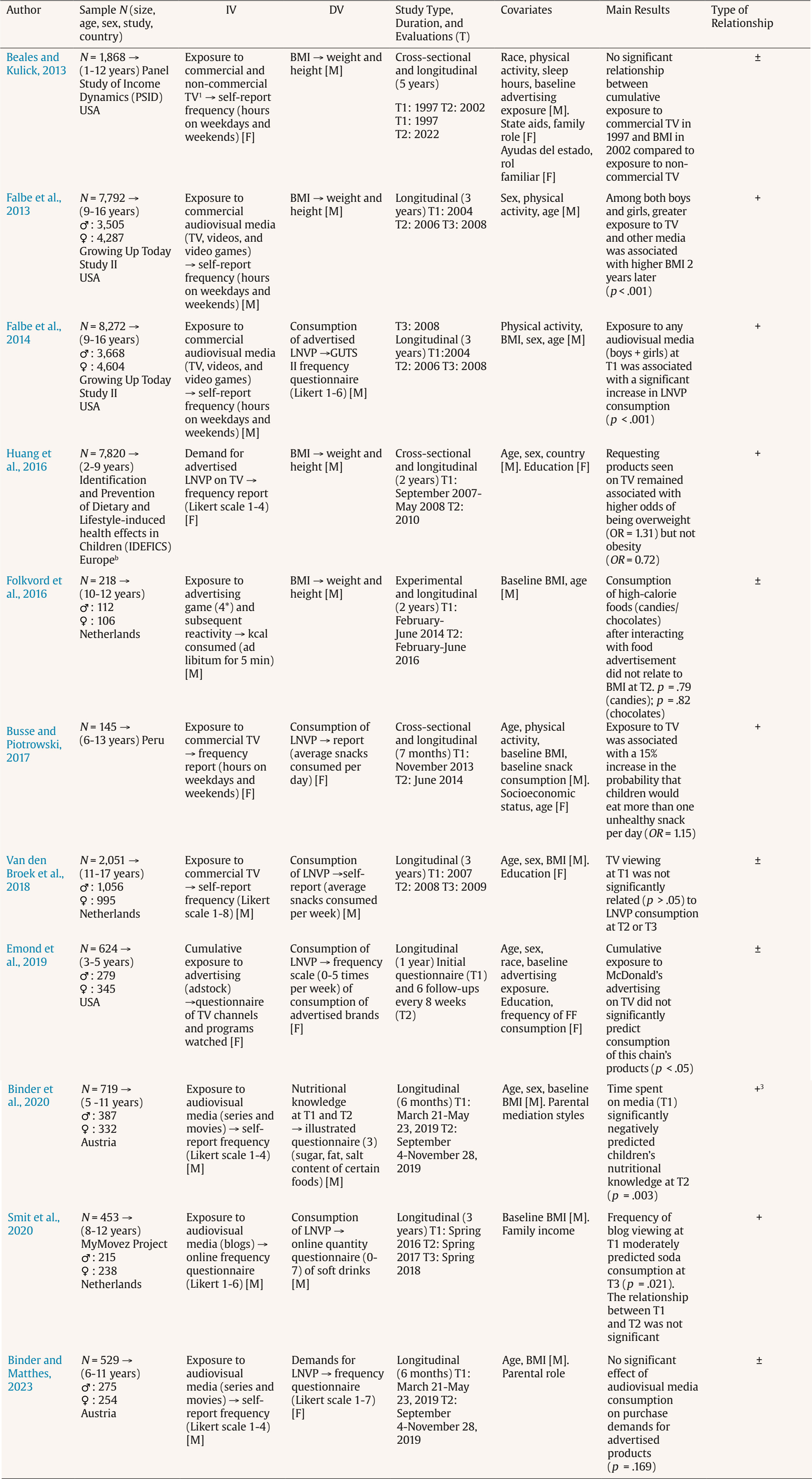 Note. IV = independent variable; DV = dependent variable; LNVP = low nutritional value products; [M] = minors; [F] = families; BMI = body mass index; FF = fast food. As for the characteristics of the measured variables, the independent variable, exposure to marketing of low nutritional value products (LNVP), was operationalized differently for each study according to their hypotheses: 41.66% of the articles studied exposure to commercial television (the more television watched, the greater the exposure to LNVP advertising); 50% analyzed exposure to various audiovisual media with advertising (television, video games, videos, social networks); and the remaining 8.33% studied caloric intake after interacting with different types of advertisements. Regarding the dependent variable (long-term consumption behaviors of LNVP), it was operationalized as follows according to each study’s hypotheses: 58.33% of the articles studied the demand/consumption of LNVP by minors; 33.33% evaluated changes in participants’ body mass index (BMI) (the higher the BMI, the higher the consumption of LNVP); and the final 8.33% evaluated the nutritional knowledge of minors (the lower the nutritional knowledge, the higher the likelihood of LNVP consumption). Evaluation of Low Nutritional Value Food Advertising Data collection on exposure to advertising of low nutritional value products (high in fats, sugars, or salt) by minors was mainly conducted indirectly through self-reports from minors or their families (hours of viewing on weekdays and weekends) (Beales & Kulick, 2013; Busse & Piotrowski, 2017; Emond et al., 2019; Falbe et al., 2013; Falbe et al., 2014), and Likert scales (Binder & Matthes, 2023; Binder et al., 2020; Huang et al., 2016; Smit et al., 2020; Van den Broek et al., 2018) that examined the frequency of viewing commercial digital media (television, video games, social networks, videos). Data from participants with extreme Student’s t deviations were discarded. Direct measures of the independent variable (Folkvord et al., 2016) were also used, such as the exposure (experimental group) or non-exposure (control group) of minors to advertising of low nutritional value products (caloric intake). Evaluation of Long-term Consumption Behaviors of Low Nutritional Value Products (LNVP) As shown in Table 2, the articles included in the review used various methods to assess the effects of low nutritional value products (LNVP) advertising on subsequent consumption behaviors. Several studies (Beales & Kulick, 2013; Falbe et al., 2013; Folkvord et al., 2016; Huang et al., 2016) indirectly evaluated the effects of the independent variable on the dependent variable through observed changes in participants’ BMI over time. Other studies (Binder & Matthes, 2023; Busse & Piotrowski, 2017; Emond et al., 2019; Falbe et al., 2014; Smit et al., 2020; Van den Broek et al., 2018) directly assessed the consumption or demand for frequently advertised LNVP by minors. They administered self-reports or Likert-type questionnaires to minors or their families at least two different time points, recording the frequency and/or amount of unhealthy products consumed over time. One study (Binder et al., 2020) considered children’s and adolescents’ nutritional knowledge as an indirect measure of subsequent unhealthy food consumption. Illustrated questions were used (e.g., “Which of the presented products has the lowest fat content?”), measuring minors’ knowledge about the fat, sugar, or salt content of different foods. Table 3 Newcastle-Ottawa Scale (NOS) for the Studies Included in the Systematic Review  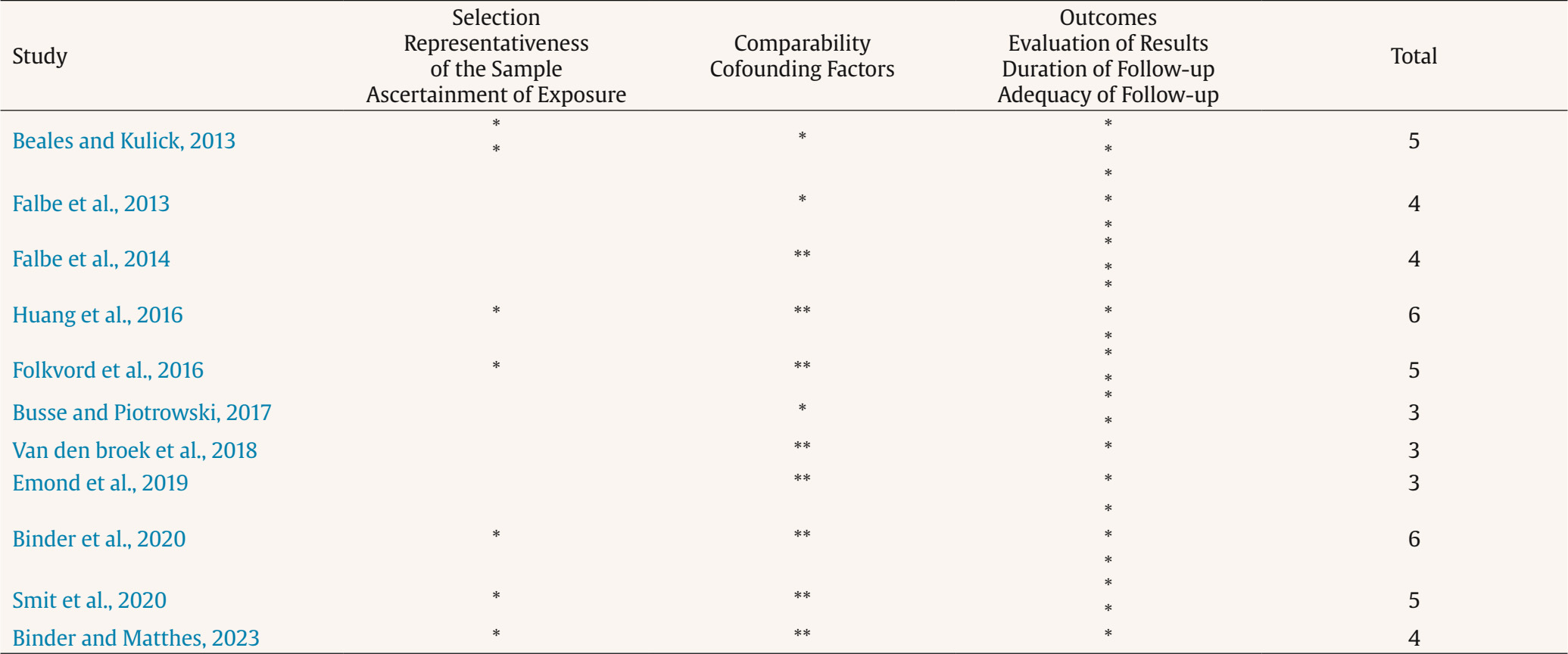 Note. Adapted Newcastle-Ottawa Scale for Longitudinal Studies: the items “Exposed cohort” and “Outcome not present at the start of the study” under the “Selection” category are not scored because, as longitudinal (non-experimental) studies, there is no control sample. Additionally, since the study focuses on eating habits rather than a disease, it is not possible to determine if the dependent variable was present before the study. Very good studies: 7 to 8 points; Good studies: 5 to 6 points Satisfactory studies: 3 to 4 points; Unsatisfactory studies: 0 to 2 points. Scoring by Category: For the “Selection” category, a maximum of one star per item will be awarded, excluding the aforementioned items. A maximum of two stars will be awarded in the “Comparability” category. A maximum of one star per item will be awarded in the “Outcomes” category. Effects of Food Advertising on Long-term Consumption Behaviors The main objective of this review was to study the long-term impact of unhealthy food advertising in digital media on minors’ consumption behaviors. Therefore, only longitudinal studies were considered, where the dependent variable was measured at least at two different time points and analyzed this relationship directly or indirectly. To statistically analyze the influence of the independent variable of interest (and covariates) on the dependent variable, all studies used the linear regression model (multiple), which allows predicting the behavior of the dependent variable. The null hypothesis proposed was the non-relationship between both variables (advertising and consumption). As reported in Table 1, out of the total reviewed studies, 50% reported a positive association (+) between digital advertising of low nutritional value products (LNVP) and subsequent consumption patterns of these products, while the remaining 50.00% found no relationship between the variables (±). The average follow-up period for participants was 2.14 years. Among the studies that analyzed the effects of food marketing by showing changes in participants’ BMI over time (Beales & Kulick, 2013; Falbe et al., 2013; Folkvord et al., 2016; Huang et al., 2016), two found a positive relationship between the variables. Specifically, in one study (Falbe et al., 2013) greater exposure to commercial digital media at T1 was associated with a moderate but significant (p < .001) increase in LNVP consumption two years later. Similarly, in another study (Huang et al., 2016), the demand for frequently advertised LNVP was moderately but significantly related to a higher likelihood of being overweight, but not obese, two years later (OR = 1.31 and 0.72, respectively). The remaining articles did not find a relationship between the dependent and independent variables, despite different operationalizations of the latter. In one study (Beales & Kulick, 2013), no significant differences were found in the BMI of minors exposed to higher commercial and non-commercial content on television five years earlier. Another study (Folkvord et al., 2016), which followed the long-term BMI of minors exposed to an LNVP ad at T1 and showed higher reactivity to food cues (consumed snacks or chocolates at will immediately after viewing), concluded that the amount of high-calorie snacks consumed after viewing the ad did not predict their BMI two years later (p = .79 and p = .82, respectively). Among the studies measuring long-term LNVP consumption or demand in minors (Binder & Matthes, 2023; Busse & Piotrowski, 2017; Emond et al., 2019; Falbe et al., 2014; Smit et al., 2020; Van den Broek et al., 2018) three reported a positive association between the studied variables. One of these studies (Falbe et al., 2014) concluded that exposure to digital media (television, video games, videos) at T1 was associated with a significant increase (p < .001) in LNVP consumption at least one year later. Another study (Busse & Piotrowski, 2017) found that cumulative exposure to commercial television increased the likelihood of minors consuming more than one unhealthy snack per day by 15% after seven months (OR = 1.15). The last (Smit et al., 2020) determined that exposure to influencers advertising LNVP on social networks moderately predicted soda consumption two years later (p = .021), but not after one year (p = .66). The remaining studies (Binder & Matthes, 2023; Emond et al., 2019; Smit et al., 2020; Van den Broek et al., 2018) found no significant relationship between the consumption or demand for LNVP and exposure to digital media. The study (Van den Broek et al., 2018), which evaluated the impact of exposure to commercial television on LNVP consumption at three different time points, did not find a significant relationship (p > .005). Another study (Emond et al., 2019) measured cumulative exposure of minors to McDonald’s advertising over a year and concluded that it did not significantly predict (p > .05) the consumption of foods from this well-known chain. The study (Smit et al., 2020) determined that exposure to food advertising on social networks did not predict unhealthy food consumption one or two years later (p = .33). Finally, another study (Binder & Matthes, 2023) evaluated the demand for advertised LNVP among minors and found that these requests were not significantly related (p = .17) to digital media exposure. One study (Binder et al., 2020) indirectly evaluated the effects of commercial advertising on subsequent consumption behavior through minors’ nutritional knowledge. It concluded that the time spent watching commercial television at T1 negatively and significantly predicted (p = .003) children’s nutritional knowledge at T2. Therefore, greater television viewing (commercial) was associated with lower nutritional knowledge and consequently a higher probability of LNVP consumption. Regarding the main covariates considered in the analyzed studies, only one study (Falbe et al., 2013) found differences based on sex, reporting a greater impact of certain types of digital exposure, such as videogames, on the body mass index (BMI) of girls. However, these differences compared to boys lack statistical significance when considering the total screen exposure time. In relation to the age of participants, four studies found differences in the effect of digital advertising on minors’ eating behavior: two studies (Beales & Kulick, 2013; Huang et al., 2016) found a stronger relationship between the studied variables in its older age group, while the other articles (Binder et al., 2020; Smit et al., 2020) found a stronger relationship in its younger age group. Risk of Bias Assessment To rate and classify the quality of these studies included in this review, the Newcastle-Ottawa Scale (NOS) was applied, as shown in Table 3. According to this scale, 5 (41.66%) of the 12 analyzed studies were classified as “good studies” and 7 (58.33%) as “satisfactory studies.” The minimum and maximum scores were 3 and 6 points, respectively, with a maximum possible score of 8 points. The items with the lowest proportion of compliance were “ascertainment of exposure” and “representativeness of the sample.” The results of the studies considered in this review neither confirm nor reject the original hypothesis, which suggested that advertising of low nutritional value products (LNVP) negatively impacts (at least directly) subsequent consumption behaviors of such foods by children and adolescents. A previous cross-sectional study (Folkvord et al., 2013) experimentally concluded that there was greater consumption of LNVP among minors exposed to low nutritional quality food advertising (soft drinks, high-calorie snacks, etc.) compared to those in the control group. However, to establish causal relationships, it is essential to conduct a longitudinal follow-up of these effects on the same sample. With this objective, the present paper systematically analyzed longitudinal studies published in the last 12 years that addressed the relationship between LNVP advertising in digital media and consumption patterns of minors. Notably, this dependent variable was operationalized in three different ways to encompass as many studies as possible. One approach used the BMI of minors, as several authors (Halford et al., 2007; Jansen et al., 2003) argue that this can predict the types of foods children consume and pay more attention to, given that children with higher BMIs generally show stronger physiological reactions to unhealthy food exposure (e.g., through advertising). Another approach considered minors’ nutritional knowledge, as argued by Fuller-Tyszkiewicz et al. (2012), the overrepresentation of unhealthy foods in digital media, including misleading information about their nutritional properties, can lead to higher consumption of such foods by minors and negatively impact their health. Finally, studies that directly evaluated the consumption/demand of frequently advertised LNVP by minors were also considered. Of the total studies reviewed, half found a positive association between the two variables, while the remaining 50% found no relationship. Therefore, it can be observed that viewing advertisements does not seem to have a uniformly positive impact on the eating behavior and nutritional knowledge of younger age groups. Six of the reviewed articles (Beales & Kulick, 2013; Binder & Matthes, 2023; Emond et al., 2019; Folkvord et al., 2016; Smit et al., 2020; Van den Broek et al., 2018) concluded that cumulative exposure to commercial digital media did not significantly predict subsequent LNVP consumption (commonly advertised in these media), suggesting that other factors such as family environment characteristics might have a greater influence on minors’ consumption behaviors. Primarily, the potential regulatory role of families over the type and amount of advertising their children are exposed to and their consumption is highlighted. Parents who do not control the type and amount of screen time their children are exposed to or who frequently succumb to their purchase demands, influenced by advertising, are more likely to have children with higher BMIs (Beales & Kulick, 2013; Huang et al., 2016). The other six analyzed studies (Binder et al., 2020; Busse & Piotrowski, 2017; Falbe et al., 2013; Falbe et al., 2014; Huang et al., 2016; Smit et al., 2020) did report significant effects of unhealthy food advertising on subsequent consumption by minors. Cumulative exposure during childhood or adolescence to any screen with commercial content (television, video games, videos, or series) modestly but significantly increased the likelihood of consuming these foods long-term. For example, among women (Falbe et al., 2014) each additional hour of screen time per day was associated with an increase in consumption of 0.15 servings of LNVP, which could translate to an approximate extra consumption of 30 kcal per day, resulting in an excess of 11,000 kcal per year. Similarly, another study (Busse & Piotrowski, 2017) concluded that each additional hour of commercial television viewing in Peruvian minors increased the likelihood of consuming more than one unhealthy snack per day by 15% (OR = 1.15). Some of these studies (Busse & Piotrowski, 2017; Falbe et al., 2013; Falbe et al., 2014) also controlled for physical activity performed by minors, finding a positive relationship between the variables, suggesting that exposure to commercial media might have a direct or indirect impact on diet. In this context, although according to Opree et al. (2021), using questions about the frequency of viewing specific digital media (self-reports) provides a reliable and valid estimate of indirect exposure to food advertising, as this is not a direct measure, we cannot ensure that the positive relationships found between exposure to LNVP advertising and higher long-term consumption of these products in minors are causal. It is also plausible that the influence of advertising on consumption habits is more complex and involves other associated factors (Figure 3). For instance, screen viewing might promote immediate and unconscious consumption of such products solely through classical conditioning (screen viewing → consumption) and not directly due to advertising exposure. This unconscious consumption could disrupt satiety signals (Blass et al., 2006) and consumption memory (Higgs & Woodward, 2009) in minors. Additionally, the sedentary behavior associated with television viewing or other audiovisual media, combined with simultaneous and unconscious LNVP consumption, would likely lead to a caloric surplus, potentially resulting in long-term overweight or obesity issues. It becomes evident that excessive screen time and the consequent exposure to low nutritional value food advertising do not seem to improve minors’ consumption patterns in the long term. However, more longitudinal research is needed to establish a causal relationship between these variables. The discordant results found in this review could be explained by the mediation of various factors related to exposure to low nutritional value food advertising and the subsequent consumption of these foods by minors, highlighting the family context. On the one hand, the nutritional ignorance of adults and the consequent family consumption habits can significantly influence the subsequent eating behavior of children. It has been observed that children whose parents frequently consumed LNVP were at a higher risk of long-term consumption of these foods (Emond et al., 2019). Additionally, other reviewed studies (Binder & Matthes, 2023; Binder et al., 2020) point out that parental communication or mediation styles related to food are particularly important for minors’ understanding and acquisition of healthy eating habits and the development of their food preferences. Generally, two parental mediation strategies are discussed: active-instructive and restrictive (Borzekowski & Robinson, 2001). The restrictive parental communication style involves setting limits or prohibitions on the consumption of certain foods without rationalizing them with the child, while the instructive parental role involves explaining and analyzing nutritional decisions with the child. Contrary to intuition, the restrictive communication style seems to be more effective than the instructive one in reducing LNVP consumption among children and adolescents (Binder & Matthes, 2023b; Harrison et al., 2012). This is probably because younger children often lack the capacity to understand the rationalizations their parents might make about the viewed content. Strengths and Limitations This research has several strengths. Firstly, it reviewed the most recent works published on the topic of interest, considering articles published in the last 12 years. A broad range of search terms was used to include as many articles as possible, and all of them had large sample sizes. Moreover, to establish causality between variables, only longitudinal articles were considered, and studies from gray literature that could present biases (conference reports, doctoral theses, etc.) were excluded. Additionally, the findings contribute to existing literature and partially support the results of previous cross-sectional research, serving as a basis for future research lines. However, some limitations were identified during this work that should be considered for future studies. First, the articles analyzed operationalized the dependent and independent variables in diverse ways, complicating subsequent analysis and comparison of results between studies. Second, direct measurement of exposure to low nutritional quality food advertising was not conducted due to the complexity of doing so long-term. It would be advisable to control for other possible variables related to this exposure, such as sedentary behavior or conditioned screen viewing and simultaneous consumption behavior. Third, self-reports were mainly used to measure both variables, which could be subject to social desirability bias. Therefore, other measurement instruments should be used to corroborate the obtained data (such as observation or interviews). Fourth, certain inherent characteristics of the analyzed studies, such as the diversity of age ranges or the lack of specification regarding participants’ gender, pose a limitation when comparing findings across studies. Thus, future research would benefit from standardizing age ranges and ensuring that participant gender is explicitly reported in each study. Lastly, as previously mentioned, more research is needed to consider other factors that may affect the studied relationship, such as peer consumption patterns, family socioeconomic status, or parental nutritional knowledge. Implications for Practice, Policy and Future Research In any case, the effectiveness of parental mediation in counteracting the effects of unhealthy food advertising on minors’ consumption behaviors may be limited by various uncontrollable factors, such as the child’s age, peer influence, or the family’s nutritional ignorance. Therefore, we consider the implementation of various primary and secondary intervention measures appropriate to minimize the impact of food advertising on consumption patterns. Given that food advertising and fast-food chains are now widespread globally (due to globalization), we believe that, as a first step, the worldwide implementation of primary measures aligned with the World Health Organization (WHO, 2024) guidelines is advisable. These measures would involve the approval and enforcement of governmental policies aimed at reducing the impact of food advertising on the general population and, consequently, on minors. An example of the effective implementation of such policies are the pioneering Laws of Food Labeling and Advertising carried out in Chile between 2017 and 2019 to combat childhood obesity (Ministerio de Salud, Chile, 2015). Among the structural measures implemented by the Chilean government, the following stand out: restrictions on all types of food advertising targeted at children under 14 years old, mandatory front-of-package nutritional labeling (four black labels highlighting excess sugar, saturated fats, sodium, and/or calories in a product), and food regulations in educational institutions (nursery schools, primary and secondary schools), which prohibit the sale of beverages or foods containing more than one nutritional warning label. Other Latin American countries have implemented isolated policies, such as front-of-package labeling laws in Argentina, Mexico, Peru, and Uruguay, or taxes on sugary beverages. However, Chile was the first nation to introduce a comprehensive package of measures, leading to a significant reduction in the purchase and consumption of LNVP (low nutritional value products), a decrease greater than that observed in the aforementioned countries (Taillie et al., 2020). Additionally, beyond the implementation of governmental regulations such as the one enforced in Chile, secondary intervention measures are proposed, specifically targeting the most vulnerable populations, such as children and adolescents. For instance, the implementation of multi-strategy nutrition education programs in educational centers and primary healthcare facilities has been shown to have a significantly positive impact on adolescents’ anthropometric measures and dietary intake (Meiklejohn et al., 2016). These multi-strategy interventions would involve the active participation of minors and their families in theoretical and practical activities led by healthcare professionals and/or educators. These activities would aim to enhance nutritional knowledge, promote healthier consumption patterns, and raise awareness of the short- and long-term impact of dietary choices on health. Highlights The studies analyzed in this review present contradictory results regarding the impact of digital advertising of low-nutritionalvalue products on children and adolescents’ eating behavior and knowledge in the long term. Half of these studies found a positive relationship between the two variables, suggesting that exposure to such advertising may influence children and adolescents’ food choices. However, the other half of the studies found no significant relationship, indicating that the effect of digital advertising on eating behavior and nutritional knowledge may vary depending on other contextual and personal factors, such as parental role. Conflict of Interest The authors of this article declare no conflict of interest. Cite this article as: González Geuder, A. J. & Martín-María, N. (2025). Effects of food advertising on youth’s eating behavior: A systematic review of longitudinal studies. Clinical and Health. Ahead of print. https://doi.org/10.5093/clh2025a15 References Appendix Newcastle-Ottawa Quality Assessment Form for Cohort Studies (Wells et al., 2015)
|
Cite this article as: González Geuder, Á. and Martín-María, N. (2025). Effects of Food Advertising on Youth’s Eating Behavior: A Systematic Review of Longitudinal Studies. Clinical and Health, 36(2), 97 - 108. https://doi.org/10.5093/clh2025a15
Correspondence: natalia.martinm@uam.es (N. Martín-María).Copyright © 2026. Colegio Oficial de la Psicología de Madrid


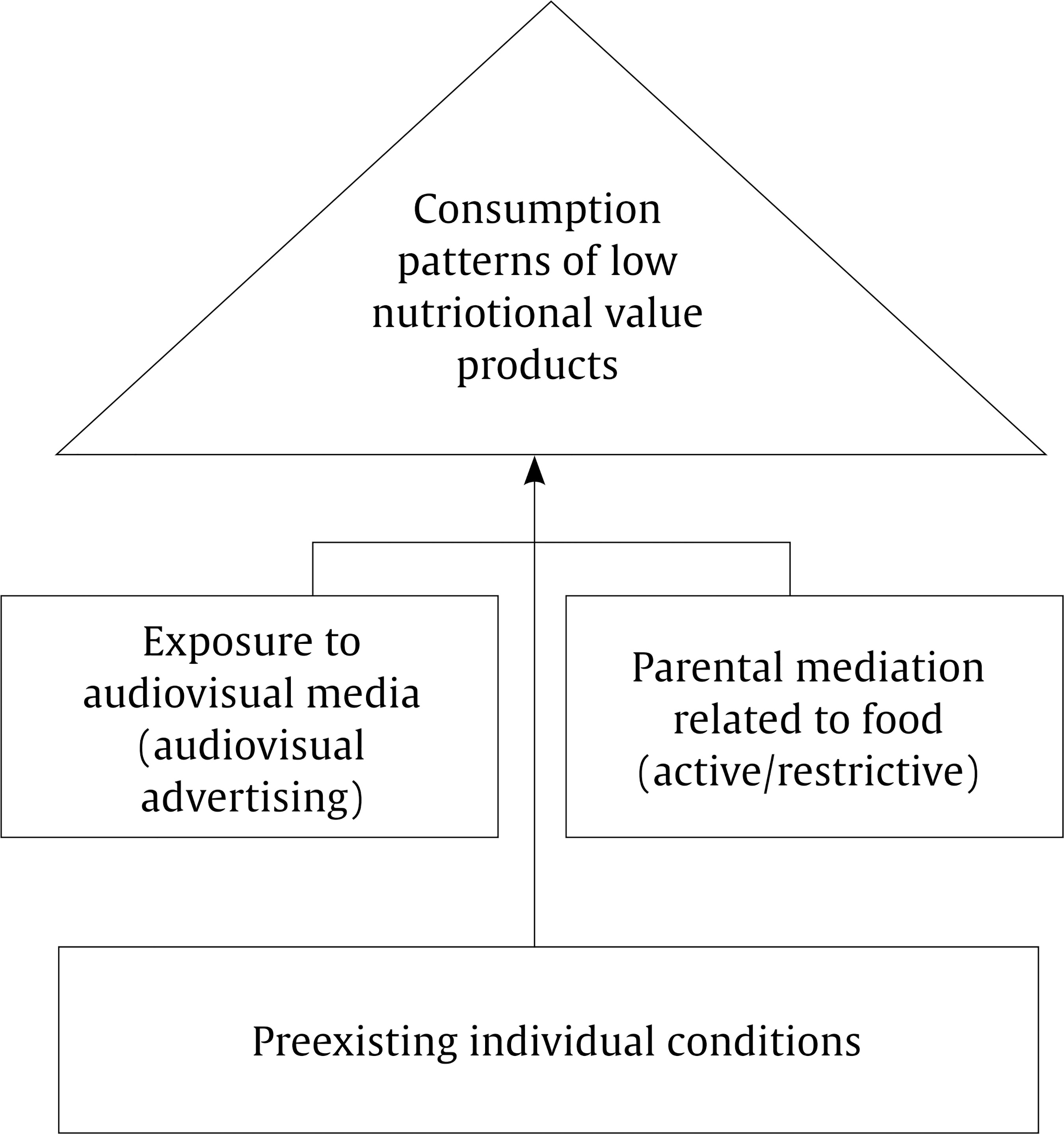
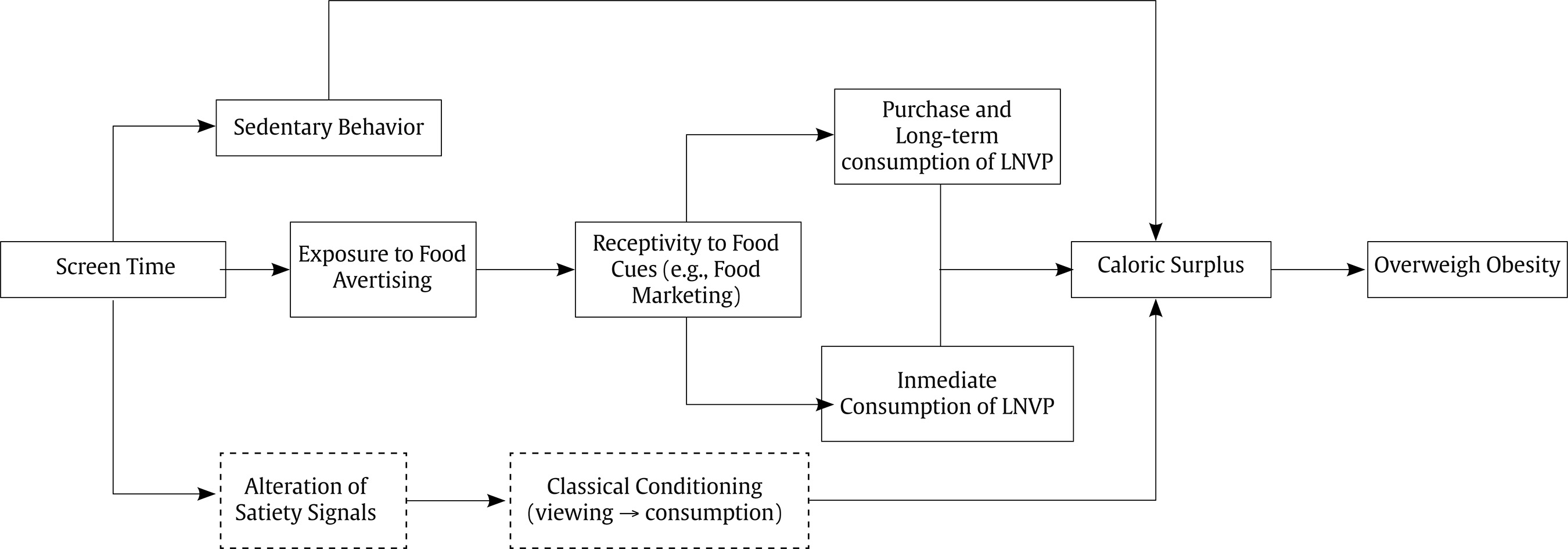






 e-PUB
e-PUB CrossRef
CrossRef JATS
JATS

